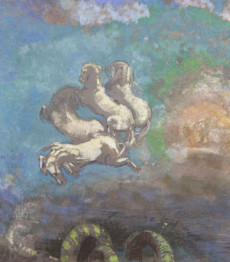Phyllis Dorothy James was born in Oxford in the Twentieth century and died in Oxford in the Twenty-first century. Over the course of her life in these two centuries, P. D. lived in the realm of the mysterious and murderous, primarily populated by Adam Dalgliesh and his New Scotland Yard stories. I had the pleasure of meeting P. D. James at a book signing in Bath, England. It was the only time I saw her, but I am grateful to have had the privilege. P. D. James was one of the women writers presented in this blog in March 2010. I’ve met Adam Dalgliesh via television productions of James’ mysteries, but not through the original source. Time to rectify that oversight. Hope P. D. James is inhabiting whatever place pleases her mystery and murder inclinations – it is sure to be special.
P. D. James from the website funny-pictures.picphotos.net
_edited-1.jpg)



















.jpg)


